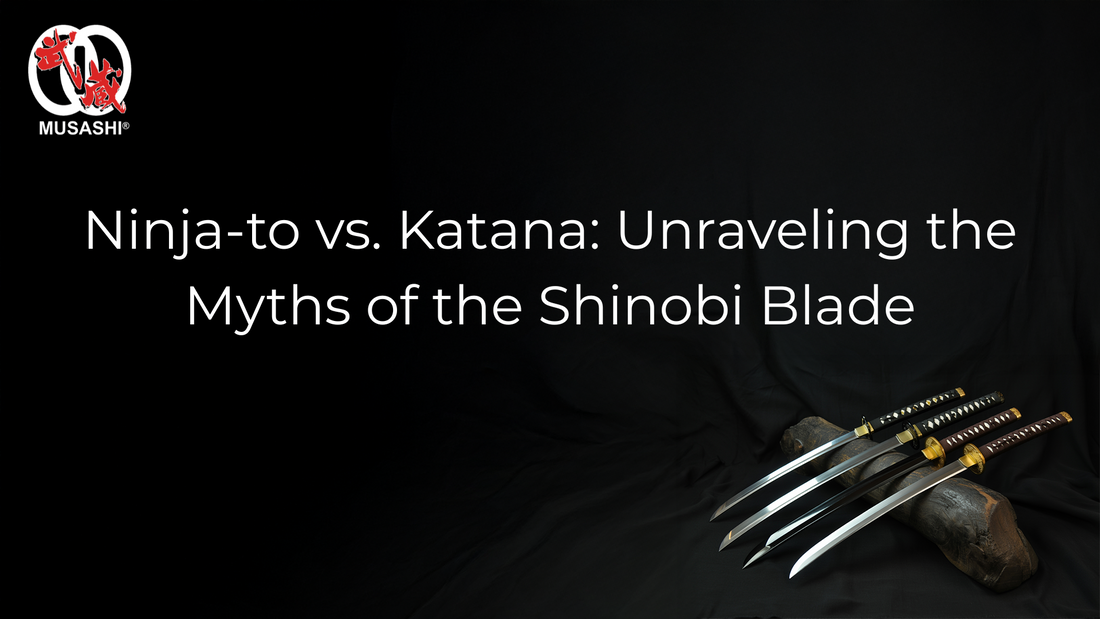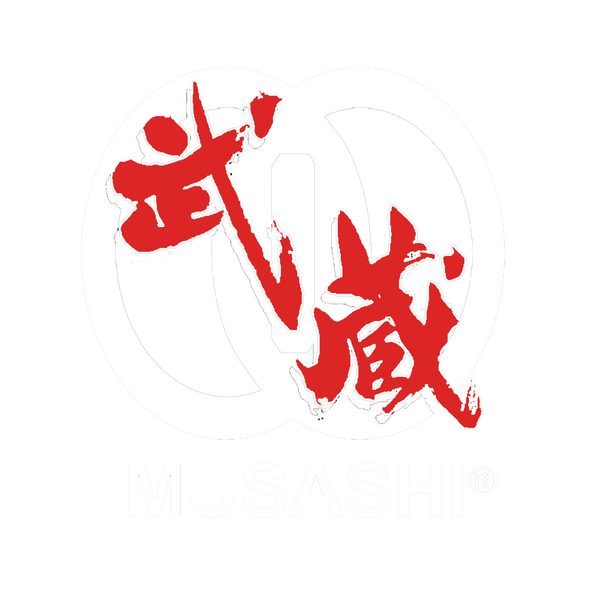
Ninja-to vs Katana - Unraveling the Myths of the Shinobi Blade
Ninja-to vs Katana - Unraveling the Myths of the Shinobi Blade highlights the key differences between the straight bladed ninja sword and the curved samurai katana. Understanding these unique features helps clarify the roles of the shinobi blade and its place in martial history.
Introduction to the Katana and Ninjato
The katana and ninjato are two famous Japanese swords. The katana is tied to samurai warriors. It is known for its curved shape and fine steel. The ninjato, also called the shinobi blade, connects to ninja stories and secret missions.
Samurai History
Samurai were top fighters in feudal Japan. They followed Bushido, a code about honor, loyalty, and skill. The katana showed their rank and was often handed down as an authentic samurai sword.
Ninja Mythology
Ninjas worked in secret during tough times in Japan. Stories say they used the ninjato sword. But real evidence shows they used many different weapons for their jobs, not just one kind of sword.
Historical Evidence vs. Cultural Myths
Movies and books confuse people about these swords. For example:
- The katana has a curved blade made with special steel using old methods.
- The ninjato usually appears straight in stories, but real records show ninjas carried varied weapons.
This mix of truth and myth makes it hard to tell what each sword really meant for samurai culture or ninja work. To get it right, you have to separate history from legend. Both swords matter in Japanese culture. Each one tells a unique story shaped by fact and myth together.
Katana Craftsmanship: Traditional Techniques and High-Quality Steel
The katana shows off old sword forging techniques and strong materials, which you can explore in our collection of authentic katanas that celebrate traditional craftsmanship. Each hand-forged katana proves how skilled Japanese swordsmiths are. They mix tradition with careful work.
Forging Techniques
Sword forging techniques make katanas tough and nice-looking. Folding steel means heating tamahagane steel many times, then hammering it. This removes bad stuff and makes layers in the metal. The blade gets stronger and shows a pattern called hada. After folding, they use differential hardening or yaki-ire. They put clay on the blade, then cool it fast in water. The edge cools faster than the spine, so it gets harder while the back stays soft. This makes a line called hamon. It's both useful and pretty.
Steel Composition
Tamahagane steel is famous for high-quality steel katana making. It has just the right amount of carbon, made by old smelting ways. This keeps the blade hard but not brittle. Sharpness and strength depend on this steel. Today's smiths still use tamahagane or similar steels that follow these old rules.
Blade Geometry
Katana blade geometry mixes sharp cutting with strong structure. Its curved shape spreads impact well when slicing. This cuts better than straight blades. The cross-section is slim but tough to allow fast cuts without breaking. These designs took centuries to get just right for fighting and looking good.
Ninjato Craftsmanship - Examining the Construction and Materials
Ninjato swords cause lots of talk about where they come from and if they are real ninja weapons. Their construction shows more cultural myths than solid history.
Construction Techniques
The ninja-to origin is unclear; many say it's a myth because records don't prove ninjas used them much. Also, the hamons seen on samurai katanas aren't found on ninja swords—this corrects some common wrong ideas about ninja weapons.
Materials Used
History says ninjas used simple, practical weapons made from what was nearby, not fancy forged blades like katanas. Ninja sword characteristics show plain designs that fit sneaky missions rather than battle or ceremony.
Historical Evidence and Modern Interpretations
Pop culture likes to show ninjatos as famous ninja swords, but real proof is missing. Many features come from later stories mixing fact with legend about ninja mythology. So, we must check carefully before believing everything.
Katana Design - The Iconic Curved Blade and Its Features
Katana design blends style with strong function through parts like the curved blade, tsuba (guard), hilt (tsuka), and scabbard (saya).
Blade Shape and Curvature
The curved sword shape makes katana blades stand out from others like straight-bladed ninjatos used by ninjas in stories or maybe in history. Curves help cutting by letting samurai draw their swords quickly (iaijutsu) and keep balance when swinging.
Tsuba (Guard) Design
Tsuba shapes change a lot but often are rounded guards that protect hands well without messing up grip or moves in fights—simple form plus good use is key for samurai gear.
Hilt and Scabbard Features
The tsuka offers a strong grip wrapped in ray skin (samegawa) under silk cords (ito). The saya sheath keeps the blade safe but lets you pull it out fast when needed—a must for samurai quick action.
Katana Usage - Samurai Warfare and Techniques
The katana stands out as the samurai's main weapon. It is known for its sharpness and light weight. These swords are made with special steel that lets samurai cut through tough armor. The katana's curved shape helps warriors move fast and strike precisely. It works well with samurai armor, allowing quick and agile moves. The blade stays sharp and strong, perfect for piercing armor or landing deadly hits.
Open Warfare Tactics
On open battlefields, samurai counted on weapons like the katana for fast attacks. The sword's balance and weight helped them stay in control while moving quickly. Besides the katana, they used spears (yari) and bows (yumi) for defense and offense. This mix of weapons let samurai switch easily between attacking and defending without losing ground.
Samurai Combat Techniques
Samurai fighting followed the Bushido code, which focused on honor and discipline. They practiced different fighting styles meant for cl
Ninjato Historical Significance - Fact vs. Fiction; Debunking Myths
The ninjato, or shinobi blade, often gets mixed up with the katana because of movies and TV. But real history tells a different story about this straight-bladed ninja sword. Unlike the curved katana, there's little solid proof that ninjato were widely used by ninja.
Lots of myths around ninjato come from fiction or wrong ideas, not facts. Experts say ninja didn't really use these swords much during feudal times. This idea mostly comes from cultural myths instead of real historical evidence.
Cultural Significance: The Katana and Ninjato in Japanese History and Popular Culture
The katana and ninjato hold very different places in Japanese culture. The katana stands for samurai heritage and follows Bushido—the warrior's code about loyalty, discipline, and courage.
Ninja myths surround the ninjato with mystery tied to stealthy shinobi clans. Even if its real use is unclear, this image lives on strongly in stories and media worldwide.
Swords also have symbolic meanings beyond fighting. They connect to spiritual ideas like Fudo Myo-ou—a deity linked to strong will—which adds depth to how swords fit into Japanese beliefs.
Miyamoto Musashi shows us skill in both fighting style and strategy using traditional swords. His legacy still influences how people see authentic craftsmanship versus fictional portrayals of samurai weapons today
The Straight Bladed Ninja Sword - Separating Fact from Fiction
The idea of a straight-bladed ninja sword, called the ninja-to or shinobi blade, is really popular. Lots of people think ninjas always used this kind of sword. But this idea is mostly a myth. It comes from confusion and wrong impressions, not real historical evidence. Real ninja swords looked different and were not just straight blades like many believe today.
Here's why the straight blade story is off:
- It's mostly from movies and stories.
- Ninja swords came in different shapes.
- Real ninja swords didn't all look the same.
Examining Historical Sources
Finding proof about ninja weapons is hard. Ninjas kept secrets, so old Japanese writings hardly say what kind of swords they used. Museums show swords from the Edo period with curved blades, like samurai katanas—not straight ones.
Here's what history tells us:
- Edo period swords usually had curved edges.
- No clear proof shows ninjas had a special straight blade.
- Many ninja swords looked like short katanas or wakizashis.
- These were made for sneaky, quick fights, not just shape changes.
So, historical sources don't back up the straight blade myth.
Modern Interpretations
Modern ideas mix fact with fiction a lot. Experts who study Japanese martial arts often say no to the story about exclusive straight-bladed ninja swords. They base this on real research, not rumors.
Ninja myths grew bigger thanks to films and books more than facts. Fixing these wrong ideas helps us respect true sword making and understand what real samurai and ninja swords were like.
To sum it up:
Ninja mythology created the straight blade story. Real ninja swords varied a lot. Learning this clears up misunderstandings and honors Japan's real sword history.
Choosing Your Sword - Considerations for Collectors and Enthusiasts
Here are some things to think about when picking your sword:
- Sword Maintenance: Katanas need special care because of their curve; discover our expert sword maintenance tips to learn how to properly care for your blade. Ninjatos have straight edges, so they might be easier to keep up, but still need regular oiling.
- Aesthetic Preferences: The katana's curve shows off tradition and grace. If you like simple or tactical looks that fit the ninja style, then a ninjato might feel right.
- Premium Sword Materials: Both swords often use strong steels like tamahagane or folded steel for sharpness and toughness. Make sure to ask about materials before you buy.
- Sword Balance and Weight: A balanced katana handles smoothly whether you're training or showing it off. Ninjatos tend to be heavier which changes how they move in your hands.
- Blade Length Comparison: Katanas usually have longer blades—about 60 to 73 cm—which helps with reach in fights or displays focused on samurai heritage. Ninjatos are shorter at 50 to 60 cm and fit close-up moves linked to ninja tactics.
FAQs
What is the difference between a katana and a wakizashi?
The katana has a longer blade, typically 60 to 73 cm, while our collection of authentic wakizashis highlights the shorter, agile designs ideal for close combat and rapid deployment. So the wakizashi is shorter, around 30 to 60 cm. Samurai used wakizashi for close combat or as a backup weapon.
How does the bushido code relate to samurai swords?
The bushido code emphasizes honor, loyalty, and discipline. Samurai swords like the katana symbolize these values and represent the warrior's spirit.
What is the sword polishing process for katanas?
Sword polishing involves careful abrasion with stones. It sharpens the edge and reveals the blade's unique patterns, enhancing both function and beauty.
How important is Japanese metallurgy in sword making?
Japanese metallurgy creates tamahagane steel. This steel balances hardness and flexibility, essential for sharp, durable blades.
Are there specific sword display stands for katanas and ninjatos?
Yes. Display stands are designed to hold swords horizontally or vertically. They protect blades and highlight sword aesthetics.
What role do historical samurai clans play in sword heritage?
Samurai clans passed down swords as heirlooms. These swords carry stories of honor and battles tied to specific families.


